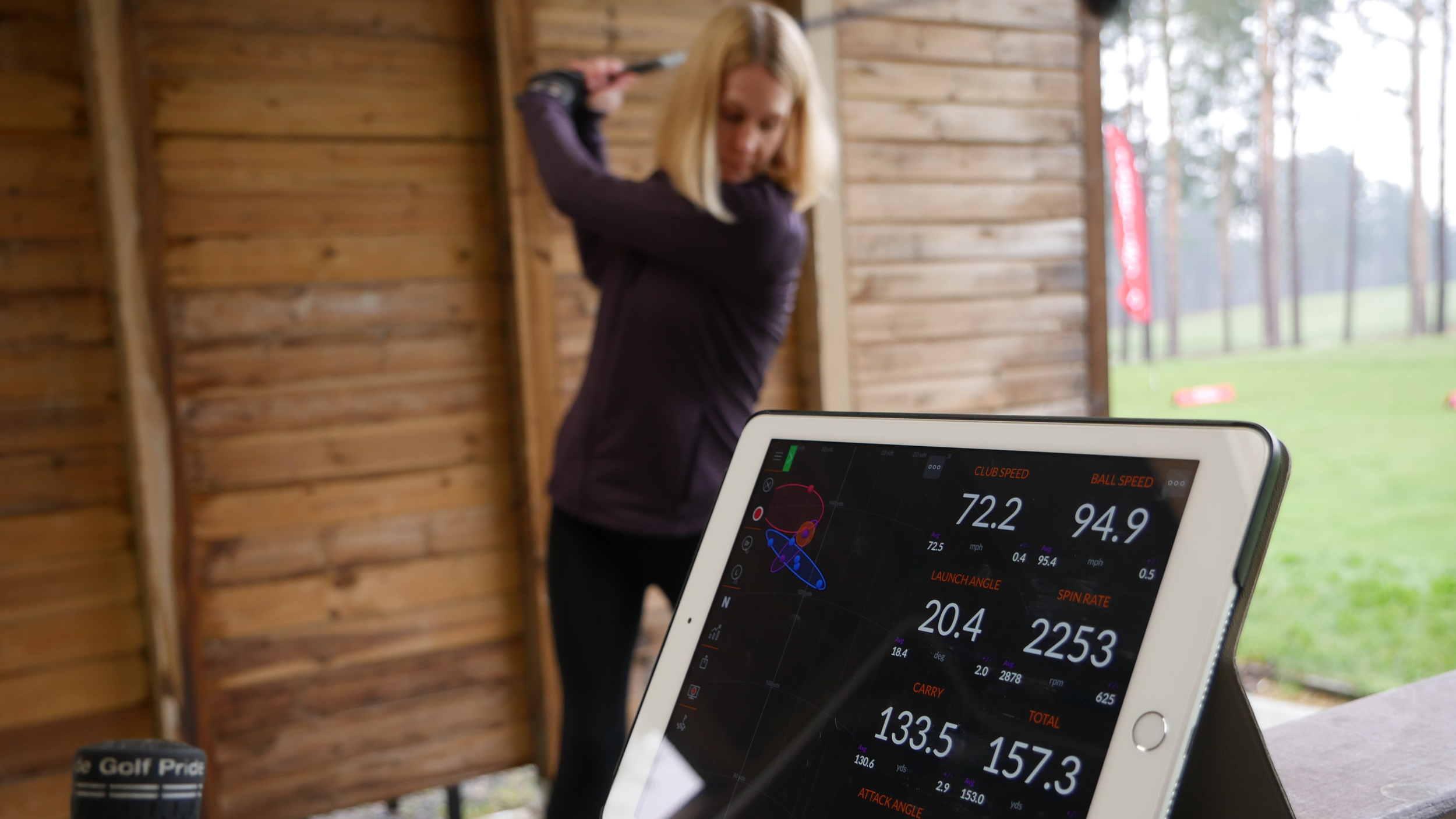Confessions Of A Golf Club Fitter
Is everything always as it seems in the custom fitting bay?

Going for a custom fitting for a brand new set of clubs is one of the most exciting things a golfer can do. The prospect of being expertly guided into some of the best irons or best drivers that will improve your golf game is surely one to relish, and in the main it is. There are some excellent club fitters out there providing a brilliant service to golfers. Manufacturers pride themselves on helping you to improve your game with their equipment to garner as many brand loyal fans as possible, hence why they offer so many compelling options which, if fitted correctly, can offer incredibly high levels of performance and in turn very happy golfers.
However, whilst certainly not widespread, things are not always what they seem in the custom fitting bay. As in everyday life, some unscrupulous individuals may be manipulating you out of your hard-earned money. We spoke anonymously to a custom fitter who has seen some of these methods firsthand. If nothing else, hopefully bringing these underhand techniques to your attention will make you a little more diligent during your next club fitting.
Money Talks
“I once hired a guy in his early thirties with lots of experience as a custom fitter to join our team at a very high-profile and reputable venue. Once we had conducted some training covering elements such as our various launch monitors, welcome procedures, and ordering processes, the day came for his first appointment. Just prior to heading into the session he turned to me and said: “What do we need to sell today?” This was met with a fairly blank expression from me, and answered with “Whatever works best for the player obviously!”
To cut a long story short, his previous workplace used to supply him with a list of what excess stock they were holding and needed to shift as a priority. Not only that but he would also be incentivised to sell this excess product by the lure of significant extra commission. Unfortunately, as I came to learn, this practice was far from uncommon, and even more remarkably, he would be encouraged to ‘manipulate’ the session data to ensure that his clients would come out requiring a ‘standard’ specification that just so happened to be available on the shop floor to take away there and then, thus clearing stock backlogs and cutting down on the administration process of ordering a new product in custom specifications.”
To be clear, simply coming out as a ‘standard’ spec in a fitting is not necessarily a red flag in itself, many players might fit well into what a particular manufacturer deems its ‘standard’ loft, lie angle, length, or shaft options. Just make sure that your fitter is offering you plenty of options to try out and that the reasons for your final specifications are explained to you and make sense.

Desperate For Distance
“Many of the best launch monitors that custom fitting facilities use have a number of settings that can be easily adjusted to fairly reflect the conditions a player will normally experience including temperature, wind, and altitude. Anyone who has played golf at any significant altitude will know that thinner air, less resistance or drag on the ball can result in some hugely significant increases in carry distances. Unfortunately, I have seen and heard of this function being misused on numerous occasions by fitters over-enthusiastic to make a sale.
In one such scenario, the fitter asked a golfer to hit a number of shots with their current golf club with the altitude set to sea level. Then once the new club had been handed over, the fitter made one subtle and swift adjustment on the keypad to move the altitude up to 5000 feet. Hey presto, the golfer’s carry distance is 10 percent further and they can’t wait to part with their hard-earned cash.”
Subscribe to the Golf Monthly newsletter to stay up to date with all the latest tour news, equipment news, reviews, head-to-heads and buyer’s guides from our team of experienced experts.
Straight down the middle (almost)
“Another very simple way to demonstrate ‘improvement’ in someone's shot patterns on an indoor launch monitor is to covertly move the target between clubs and I’ve seen multiple fitters do this. For example, let’s say Mr Smith has come in for a fitting complaining of a persistent right miss, and true to form every shot Mr Smith has hit with his own driver finishes 40 yards right of target. The fitter tries everything to bring this dispersion circle closer to the center of the fairway with various shafts, head weights, and lie angle changes but it isn’t getting any joy.
The prudent and ethical thing to do here would be to recommend a lesson with a PGA Professional to work on the technical flaws causing this shot pattern and then revisit the fitting once Mr Smith had had a chance to work on his game. But no, this fitter wants the sale and the accompanying commission, so they head to the settings section of the launch monitor, and in the blink of an eye, they drag the alignment target 30 yards right of where it previously sat on the screen. All of a sudden, hitting the exact same shots Mr Smith has brought that dispersion pattern from 40 to 10 yards right. Another successful sale to a happy customer.”

Make the bad shots go away
Demonstrating tangible improvements in dispersion and distance is a key visual in convincing a player that a club or clubs will improve their game. Whether that is based on distance, or simply a tighter grouping of balls the best launch monitors like Trackman 4 and GCQuad give exceptionally clear visuals of these patterns on their summary screens. Easy to interpret and cheat proof right? Wrong.
“One of the age-old tricks of the unscrupulous club fitter is to leave every single shot, no matter how poor, in the selection screen to display how a client's current club is performing, often using 20-plus balls for this to create a nice wide circle. Then when the fitter has decided what club they would like to sell, quickly hitting the delete button on any less than perfect shots will swiftly tidy up that dispersion circle and make that new club seem essential to the client.”
Again, don’t be too alarmed here if you see your fitter deleting the odd shot here and there, for example, there isn’t much usable data in a fresh top or a shank(!), but just make sure that the shots used are a fair representation of what you are seeing.
Clubbing up
“This trick may sound laughably simple, but I have even had this one tried on me! At an iron fitting a handful of years back, I was keen to see if there were any yardage gains available with a particularly great-looking set of irons that I’d had my eye on for a while. After a lovely introduction and chat about my game, I was encouraged to hit a number of my current 7-irons to establish a baseline of performance. After a dozen or so shots (all of which were left in the selection by the way), the fitter then handed me the equivalent club in the same specification as a starting point, and I watched on in amazement as my carry distance jumped up by the best part of 15 yards.
The fitter put this down to the incredible new hollow-bodied technology and said he’d been seeing this across the board with all of his fittings. It was only when I asked him what the loft difference between the irons was, as the newer model looked very strong in loft, that I realized I had been hitting a 6-iron all along. No wonder my carry had jumped up 15 yards. I am 100% certain that this fitter knew exactly what he was doing in this scenario and I wondered how many times he had pulled this con off.”

Changing golf balls
“One of the keys to achieving valid and usable results in a custom fitting session is keeping everything as consistent as possible. That includes the aforementioned things such as leaving the temperature, altitude, and target well alone, but there is also another sneaky way that I have seen fitters improve their outcomes in order to make a sale, and that is with the golf ball. Often during a fitting - let’s use an iron fitting in this example - a player will be asked to warm up and provide some base data with their own club.
Fitters often use this time to chat and discuss what their client is looking to achieve from their session. This can often include things such as more distance, improved spin, higher peak height, and many more. I once witnessed a session where I was accompanying a friend to a well-respected independent fitting/build center and I watched on as all of the baseline data with my friends 7-iron was gathered with scuffed-up range balls that were so firm the impact noise more resembled two clashing saucepans than a golf shot.
Once my friend had completed his ‘data gathering’ from his own clubs, they discussed the findings and agreed that an iron offering more spin would be beneficial to his game. I then watched in disbelief as the battered old range balls were subtly nudged to the side and a small batch of premium balls were introduced for the next phase of testing with zero acknowledgment from the fitter. In fact, zero acknowledgment would be a very kind assessment of what I saw, it was a sleight of hand that David Blaine would have been proud of.
Lo and behold, up jumped my friend’s spin by over 1000 rpm accompanied by a nonsensical explanation of ‘improved dynamic loft’ on the new irons from the fitter. Not wanting to cause confrontation, I subtly advised my friend that it would be worth mulling over the fitter's recommendation before committing to a purchase before explaining to him exactly what had happened on the car journey home.”
It needs to be reaffirmed here that this is a collection of some of the worst things this fitter has seen in various fitting bays over the years and should in no way be interpreted as the norm from the custom fitting community. There are many exceptional fitters out there operating fully transparent and ethical businesses that can genuinely help you to improve your game. Our advice would be to do your research before entrusting someone with your golf game and stay vigilant to any of the tricks that have been highlighted in this article.